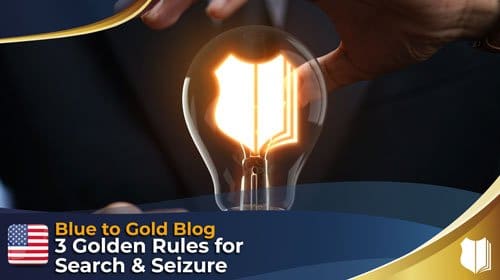

What is the Motor Vehicle Exception?
The automobile, or motor vehicle exception allows officers to search cars for evidence, contraband, and fruits or instrumentalities of crimes without a search warrant. When
or use our live chat
Customer Service


Plain view is nothing more than right to be, right to see. That’s the simplicity of it: right to be, right to see, hear and smell. So basically, the idea here is that if you are lawfully present, there is no search under the Fourth Amendment if you are simply using your God-given senses,
If you are lawfully in somebody’s home, for instance, investigating a domestic violence and you’re looking around the home, plain view can apply. Let’s say that the husband is a suspected drug dealer, and you are lawfully present. In your mind you’re thinking, “Well, since I’m here, let me see if I can find some plain view evidence.”
And you look over and you see drugs behind a book in the bookcase. There’s a little cellophane package, sticking out a little bit. He tried to hide it before you guys came in and didn’t do a good job. That’s plain view. That’s plain view, because you have a right to be where you are, you’re using your God-given senses and the evidence is immediately apparent.
There’s another thing that courts will throw in there. They’ll say that not only do you have to be lawfully present, but the evidence also must be immediately apparent as evidence or contraband and so forth. All that means is that you look at it and you instantly know what it is. You know it’s evidence. You don’t look at it and think, “Wait, what am I seeing here?” Immediately apparent, basically means that you have probable cause without manipulation. So, if you manipulate something that’s not plain view,
Let me give you an example. You’re in a home and you see a very expensive stereo that you believe is stolen. You move the stereo out from the wall to see the serial number so you can check with Dispatch to see if that’s part of a stolen property report. That’s not plain to you because you manipulated the item.
Now, let’s add one more fact here. Before we go, don’t forget about the seizing of the item. Plain view does not necessarily allow you to seize it. You can only seize the item, if seizing it would not cause a constitutionally prohibited intrusion.
For example, you’re walking by an apartment, and you look in the window, and see drugs in plain view on the kitchen table. That doesn’t mean that you get to go into the apartment to seize it. Seeing it is one thing, seizing it is another.
So, for plain view, seizure requires lawful access. For example, you’re in a home for domestic violence and you’re doing a protective sweep. You walk by a room; you look in there and you see drugs on top of the bed. You could go in there and seize the drugs because you’re already in the home.
But you couldn’t do the same thing if you saw drugs through the window of an apartment. You need lawful access. Now, if the guy is in the bathroom, and he comes out and sees you looking into his apartment, then he knows the jig is up. He grabs the drugs and starts going towards the bathroom to flush them away. Well, if you enter at that point, it would likely be valid under imminent destruction of evidence.
There it is. Plain view is right to be, right to see, hear and smell. If you want to seize it, you must have lawful access. There you go. I hope it helps. Stay safe out there!


The automobile, or motor vehicle exception allows officers to search cars for evidence, contraband, and fruits or instrumentalities of crimes without a search warrant. When


These three golden rules come from reading thousands of court cases over the last 20 years and seeing a theme regarding what the courts are


This question is: Can you look inside a woman’s purse, or a man’s backpack during a pat down? The answer is, “Maybe.” Here’s how this


Here is the question: Can an officer reach slightly into a person’s home to pull them out and arrest them? If an officer has probable
© Blue to Gold, LLC. All rights reserved